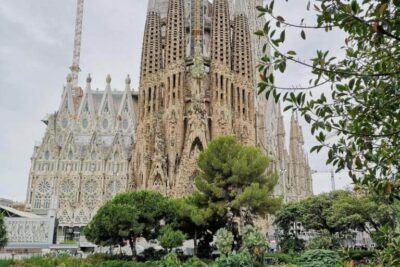
- The Architectural Marvel of the Sagrada Familia: A Masterpiece of Gaudí
- Historical Significance of the Sagrada Familia in Barcelona
- Exploring the Unique Design Elements of the Sagrada Familia
- The Cultural Impact of the Sagrada Familia on Barcelona's Identity
- Visiting the Sagrada Familia: Tips for an Unforgettable Experience
- Understanding the Symbolism Behind the Sagrada Familia's Facades
The Sagrada Familia, a masterpiece of architect Antoni Gaudí, stands as a testament to the innovative spirit of Catalan modernism. Its intricate facades and towering spires capture the essence of religious devotion and artistic ambition, drawing millions of visitors each year.
The Iconic Sagrada Familia in Barcelona is not only a symbol of the city but also an ongoing work of art, still under construction after more than a century. The basilica's unique blend of Gothic and Art Nouveau styles showcases Gaudí's visionary approach to architecture, making it a must-see landmark for anyone exploring Barcelona.
The Architectural Marvel of the Sagrada Familia: A Masterpiece of Gaudí
The Sagrada Familia is not just a church; it is a symbol of architectural innovation that has captivated architects and art enthusiasts worldwide. Designed by Antoni Gaudí, this basilica exemplifies the harmony between nature and architecture through its organic shapes and intricate details. Its design incorporates elements of natural forms, evident in the tree-like columns that support the ceiling, providing an experience that is both awe-inspiring and spiritually uplifting.
The use of color and light in the Sagrada Familia is another remarkable aspect that sets it apart. Gaudí envisioned the interior as a vibrant space where natural light would create an ethereal atmosphere. Through the use of stained glass windows, sunlight filters in, bathing the interior in a spectrum of colors, enhancing the sense of divine beauty. The interplay of light and shadow is carefully crafted, offering a unique ambiance that changes throughout the day.
One cannot overlook the significance of the Sagrada Familia's facades, each telling a different story through intricate sculptures and carvings. The Nativity Facade celebrates the birth of Christ, adorned with detailed representations of flora and fauna, while the Passion Facade starkly contrasts this with its somber and angular forms reflecting the suffering of Christ. This juxtaposition highlights Gaudí's skill in conveying profound themes through architectural elements.
To truly appreciate the architectural marvel of the Sagrada Familia, one must consider its ongoing construction. As it approaches completion, the basilica will incorporate cutting-edge technology alongside traditional craftsmanship, ensuring Gaudí's vision is preserved. This fusion of heritage and modernity not only pays homage to the past but also paves the way for future generations to admire this masterpiece. The Sagrada Familia remains a symbol of Barcelona's identity and a testament to the enduring power of artistic expression.
Historical Significance of the Sagrada Familia in Barcelona
The historical significance of the Sagrada Familia in Barcelona extends beyond its architectural grandeur; it represents a profound cultural and religious symbol for the city and Catalonia as a whole. Construction began in 1882, and since then, it has become a focal point for the community, reflecting the aspirations and identity of the Catalan people. This ongoing project signifies not only faith but also resilience, showcasing the dedication to completing Gaudí's vision.
As a UNESCO World Heritage site, the Sagrada Familia embodies the unique style of Catalan modernism, making it a crucial part of the region's artistic heritage. Its intricate designs serve as a canvas for various themes, including spirituality, nature, and the interplay between human life and divinity. The basilica's significance is also highlighted by the following aspects:
- Innovation in Design: Gaudí's approach broke away from traditional architectural styles, influencing future generations of architects.
- Cultural Identity: The Sagrada Familia is a symbol of Catalonia's cultural pride and artistic innovation.
- Community Engagement: The project has fostered a sense of belonging among locals, who have actively participated in its funding and construction.
The Sagrada Familia also plays a pivotal role in religious life, serving as a site for numerous ceremonies, including baptisms and weddings. Its unique blend of spirituality and artistry makes it a pilgrimage destination for those seeking a deeper connection to their faith. The basilica not only stands as a testament to Gaudí's genius but also as a living monument to the ongoing evolution of Barcelona's cultural landscape.
In summary, the historical significance of the Sagrada Familia is multifaceted, intertwining aspects of architecture, culture, and spirituality. As it continues to rise above the skyline of Barcelona, it invites both admiration and reflection, reminding visitors of the enduring power of human creativity and devotion. This landmark is not merely a building; it is a dynamic symbol of hope and inspiration for generations to come.
Exploring the Unique Design Elements of the Sagrada Familia
The unique design elements of the Sagrada Familia reflect Antoni Gaudí's profound understanding of nature and spirituality. One of the most striking features is the use of hyperbolic paraboloids, which form the basis of the basilica's intricate vaults. These shapes emulate natural forms, allowing the structure to blend seamlessly with its surroundings. Gaudí's architectural philosophy emphasizes organic growth, as seen in the flowing lines and intricate details throughout the church.
Another remarkable aspect of the Sagrada Familia is its symbolic representation of the Christian faith through architectural motifs. Each facade is meticulously designed to convey different biblical narratives, such as the Nativity and Passion. This thematic approach not only enhances the visual experience but also serves to educate visitors about key events in Christianity. Key elements include:
- The Nativity Facade: Celebrates the birth of Jesus with joyful and elaborate sculptures.
- The Passion Facade: Portrays the suffering of Christ with stark, angular features to evoke solemnity.
- The Glory Facade: Represents the Resurrection and the glory of Christ, symbolizing hope and eternal life.
The integration of light within the Sagrada Familia further distinguishes its design. Gaudí strategically positioned windows to harness natural light, creating a kaleidoscope of colors throughout the interior. This manipulation of light not only enhances the aesthetic experience but also imparts a spiritual ambiance that evolves with the time of day. The stained glass windows, designed by various artists, serve to narrate biblical stories, merging artistry with theology.
Finally, the Sagrada Familia incorporates innovative structural techniques that push the boundaries of traditional architecture. The use of catenary arches and tree-like columns not only provides stability but also exemplifies Gaudí's commitment to merging form and function. This progressive approach ensures that the basilica is not just a static monument but a dynamic work of art that continues to evolve, embodying the spirit of creativity and resilience in Barcelona.
The Cultural Impact of the Sagrada Familia on Barcelona's Identity
The Sagrada Familia's impact on Barcelona's cultural identity extends far beyond its architectural brilliance. It has become a symbol of Catalan pride, embodying the unique spirit of the region. Residents of Barcelona often view the basilica as a reflection of their own aspirations, a representation of their rich history and artistic heritage that resonates deeply with both locals and visitors alike.
Moreover, the Sagrada Familia serves as a cultural beacon, attracting millions of tourists each year. This constant influx not only contributes significantly to the local economy but also fosters a global appreciation for Catalan modernism. The basilica's design and ongoing construction have inspired artists, architects, and cultural enthusiasts, creating a dialogue around creativity and innovation in architecture. Key facets of this cultural impact include:
- Tourism and Economy: The Sagrada Familia is one of the most visited monuments in the world, bolstering Barcelona's status as a premier tourist destination.
- Artistic Inspiration: It has inspired countless artists and architects, encouraging new interpretations of modernism.
- Community Engagement: Local residents participate in initiatives to preserve and promote the Sagrada Familia, strengthening community ties.
Furthermore, the Sagrada Familia's role in religious and spiritual life adds another layer to its importance in Barcelona. As a site for sacred ceremonies and gatherings, it fosters a sense of communal faith, bridging past traditions with contemporary beliefs. The basilica stands as a testament to the enduring nature of spirituality in a rapidly changing world, making it a profound landmark for those seeking connection and meaning.
In essence, the cultural impact of the Sagrada Familia on Barcelona's identity is multifaceted, intertwining history, spirituality, and artistry. As the basilica continues to rise and evolve, it remains a dynamic representation of the city’s commitment to embracing its heritage while looking towards the future, inspiring generations to come.
Visiting the Sagrada Familia: Tips for an Unforgettable Experience
Visiting the Sagrada Familia is an unforgettable experience, but a little planning can enhance your journey. To avoid long queues, book your tickets online in advance, selecting a time slot that suits your schedule. This not only saves time but also allows you to enjoy the basilica at a less crowded moment, providing a more intimate experience with Gaudí's masterpiece.
When exploring the Sagrada Familia, consider joining a guided tour. Knowledgeable guides can provide valuable insights into the architectural details and historical context, enriching your understanding of the basilica’s significance. Look for tours that include access to the towers, as they offer breathtaking views of Barcelona, adding another dimension to your visit.
Don’t forget to allocate time to admire the surrounding gardens and the adjacent Nativity Square. This area features beautiful sculptures and provides a peaceful atmosphere for reflection. Additionally, the nearby museum offers further context on Gaudí’s vision and the ongoing construction, making it a worthwhile stop to complete your experience.
Lastly, be sure to visit during different times of the day to witness the stunning play of light through the stained glass windows. The interior transforms as sunlight filters through, creating a kaleidoscope of colors that enhances the spiritual ambiance of the space. Each visit offers a unique experience, reminding you of the basilica's evolving beauty and the genius of Gaudí.
Understanding the Symbolism Behind the Sagrada Familia's Facades
Understanding the symbolism behind the Sagrada Familia's facades reveals a deeper narrative woven into its design. Each facade not only serves an aesthetic purpose but also embodies vital theological concepts. For instance, the Nativity Facade, rich in organic forms, represents the joy and wonder of Christ's birth, while the Passion Facade starkly depicts the suffering and sacrifice of Jesus. This contrast exemplifies the duality of existence, affirming Gaudí's intention to reflect the entirety of the Christian narrative through architecture.
Moreover, the Sagrada Familia's facades are adorned with intricate sculptures that convey profound messages. The carvings include representations of various biblical figures and themes, allowing visitors to engage with the stories of faith visually. Key elements include:
- The Nativity Facade: Celebrates life and creation with joyful depictions of flora and fauna.
- The Passion Facade: Conveys sorrow and sacrifice through angular, dramatic sculptures.
- The Glory Facade: Symbolizes the resurrection and the promise of eternal life.
In addition to their spiritual significance, the facades also reflect Gaudí's innovative approach to materials and structure. By utilizing a combination of stone, mosaics, and stained glass, the facades create a dynamic interplay of light and shadow. This use of natural materials not only enhances the aesthetic experience but also connects the architecture to the surrounding environment, further emphasizing Gaudí's vision of harmony between nature and faith.
Ultimately, the symbolism embedded in the Sagrada Familia's facades serves as an invitation for contemplation and spiritual reflection. Each visitor is encouraged to interpret the messages within the art and architecture, making the experience personal and unique. This multifaceted approach not only enriches the understanding of the basilica but also allows it to resonate on different levels with a diverse audience, affirming its status as a modern spiritual icon.
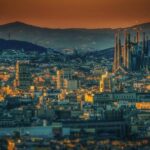 The Sagrada Familia: 🏰🇪🇸 Gaudí's Masterpiece in Barcelona
The Sagrada Familia: 🏰🇪🇸 Gaudí's Masterpiece in BarcelonaIf you want to know other articles similar to The Iconic Sagrada Familia in Barcelona you can visit the category Sagrada Familia.
Deja una respuesta

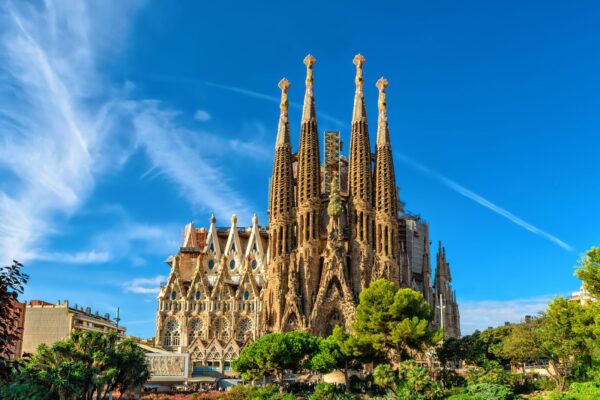
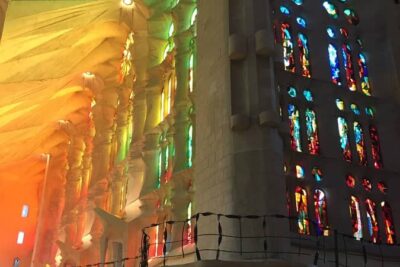



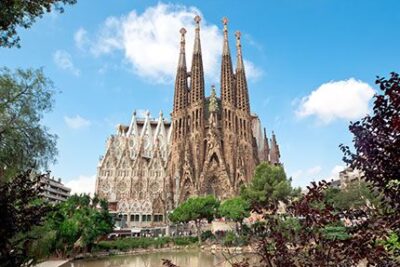
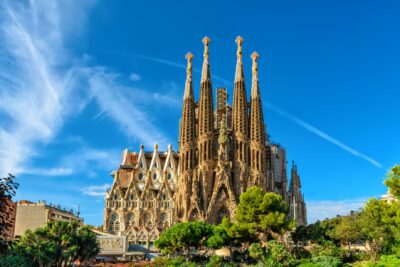
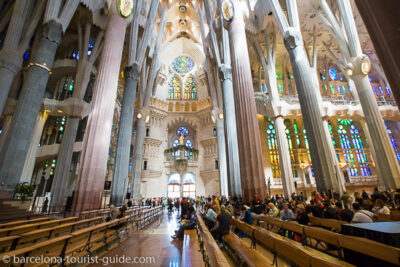
Read more!